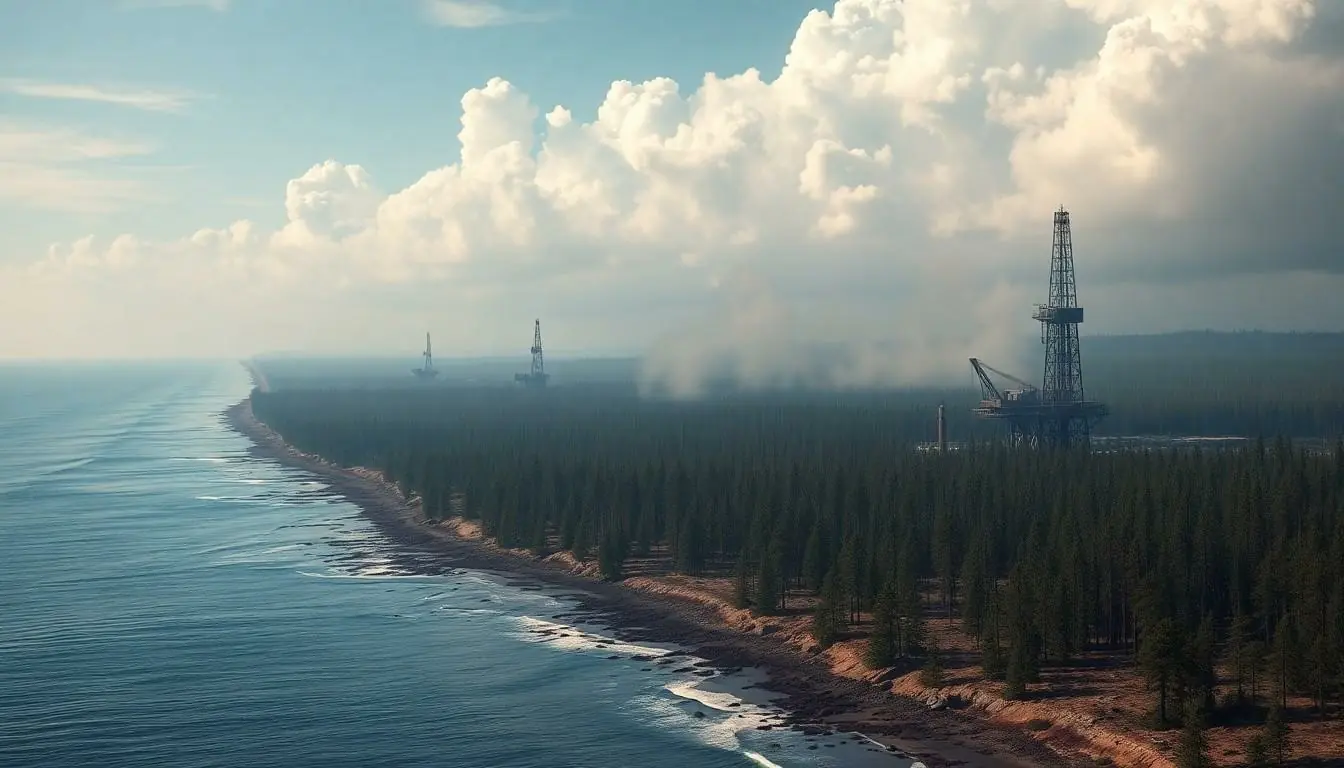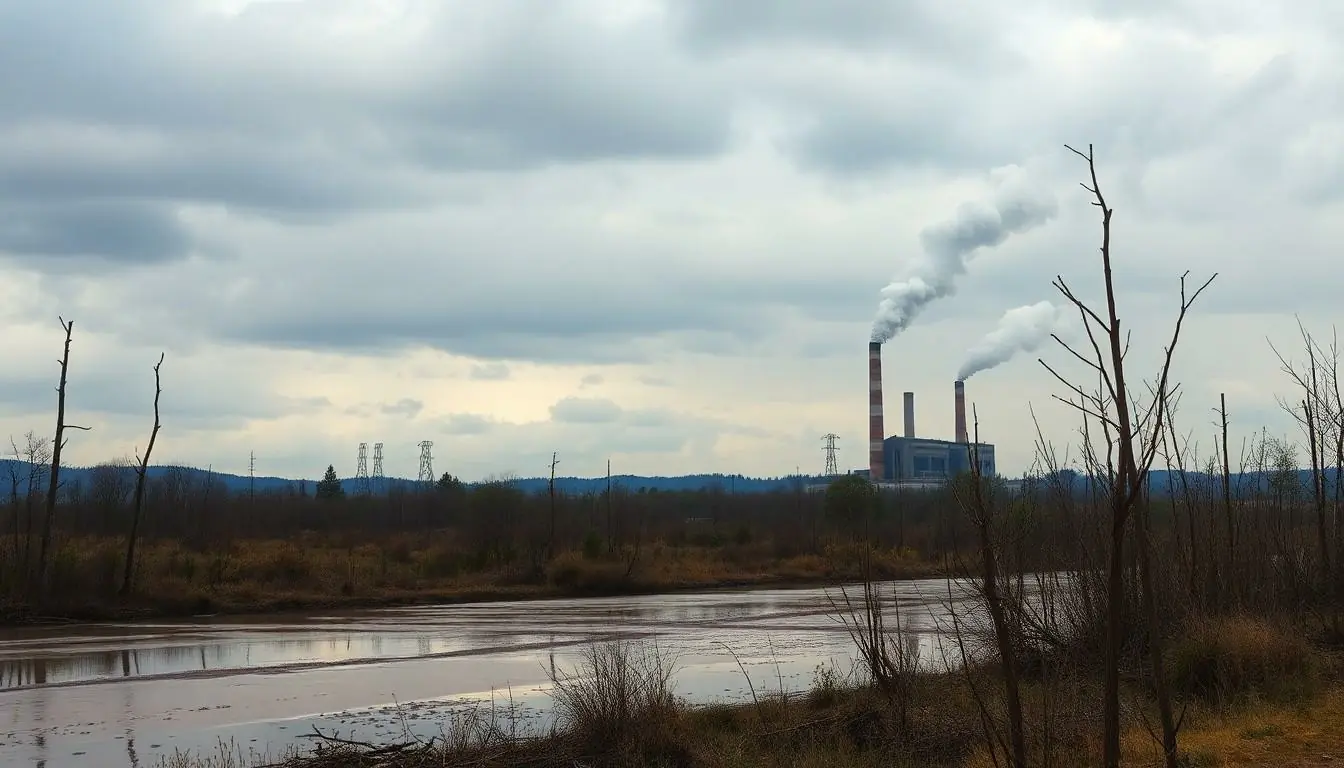Non-renewable energy sources like coal, oil, and natural gas have been the backbone of modern civilization, but they come with a hefty price tag. Picture this: while you’re enjoying that cozy evening by the fire, Mother Nature is throwing a tantrum because of the pollution and greenhouse gases these energy sources unleash. It’s like inviting a grumpy relative over who eats all your snacks and leaves a mess behind.
Not only do non-renewable sources contribute to environmental degradation, but they also lead to economic instability. As fossil fuel reserves dwindle, prices can skyrocket faster than a kid on a sugar rush. So, while they might seem convenient now, the long-term consequences of relying on these energy sources could leave us in a sticky situation. Let’s dive into the not-so-glamorous side of non-renewable energy and uncover why it’s time to consider alternatives.
Table of Contents
ToggleOverview of Non Renewable Energy
Non-renewable energy consists of sources such as coal, oil, and natural gas. These sources provide a significant portion of the world’s energy supply. Fossil fuels typically require millions of years to form, so they exist in finite quantities. Extracting and processing them often leads to environmental degradation.
Coal represents one of the most abundant non-renewable resources. Burning coal emits high levels of carbon dioxide, contributing to climate change. Oil serves as a primary energy source for transportation. Oil spills and leaks pose serious threats to marine ecosystems.
Natural gas is considered cleaner than coal and oil but still produces methane, a potent greenhouse gas. Extraction methods, such as fracking, can contaminate groundwater. Relying on these energy sources contributes to fluctuating market prices, creating economic instability.
Additionally, non-renewable energy sources are linked to geopolitical tensions. Countries rich in fossil fuels may experience conflicts over resource control. Guided by this reliance, nations often find themselves dependent on imports, exposing them to supply chain vulnerabilities.
Long-term sustainability suffers as consumption increases. Each year, reserves deplete, leading to higher extraction costs. Transitioning to renewable energy sources could mitigate these issues.
Shifting toward cleaner alternatives provides a more sustainable future and reduces environmental harm. Recognizing the disadvantages of non-renewable energy emphasizes the urgent need for change. As the demand for energy grows, adopting more sustainable practices becomes essential.
Environmental Impact

Non-renewable energy sources create significant environmental challenges. Their use contributes to various forms of pollution, ultimately harming ecosystems.
Pollution and Emissions
Fossil fuel combustion emits greenhouse gases like carbon dioxide and methane. These gases trap heat in the atmosphere, exacerbating climate change. Power plants and vehicles release particulate matter, which can lead to respiratory problems in humans and animals. Additionally, oil extraction and refining procedures often result in oil spills and harmful pollutants entering the air and water. Air quality deteriorates in areas near fossil fuel facilities, impacting nearby communities’ health. The cumulative effect of these emissions leads to long-term environmental degradation, highlighting the pressing need for cleaner energy alternatives.
Habitat Destruction
Energy extraction processes often result in substantial habitat loss. Deforestation occurs for mining operations, disturbing local wildlife and disrupting ecosystems. Coastal regions face threats from oil drilling, impacting marine habitats and the biodiversity within them. Natural gas extraction through fracking can lead to soil and water contamination, further endangering plant and animal life. Fragile ecosystems suffer from the infrastructure required to support fossil fuel extraction and transportation. These destructive practices underline the urgent need to transition to renewable energy sources, protecting both habitats and biodiversity.
Economic Concerns
Economic instability arises from reliance on non-renewable energy sources. Price volatility significantly impacts consumers and businesses. Fluctuations in fossil fuel prices occur due to geopolitical tensions, supply chain disruptions, and market speculation. Such price changes create uncertainty, forcing businesses to adapt budgets continually. This unpredictability leads to higher costs for electricity and fuel, affecting household expenses.
Resource depletion remains a critical issue as fossil fuel reserves dwindle. Finite quantities of oil, coal, and natural gas drive competition for remaining resources. Scarcity increases extraction efforts, leading to greater environmental degradation and higher operational costs. As reserves diminish, the likelihood of price hikes escalates, creating economic challenges for both consumers and industries. Transitioning to renewable energy sources offers a more stable and sustainable economic future. By investing in alternatives, communities can mitigate these economic risks linked to non-renewable energy reliance.
Social Implications
Non-renewable energy sources can negatively affect social structures and public health. The impact of fossil fuel use extends beyond the environment, affecting communities at multiple levels.
Health Risks
Health risks associated with non-renewable energy sources pose significant concerns. Air pollution from fossil fuel combustion contributes to respiratory diseases, leading to increased healthcare costs. Communities near power plants often experience higher rates of asthma and other health issues due to particulate matter. Water contamination from extraction processes, such as fracking, can expose populations to harmful chemicals. Mental health challenges may arise from the instability caused by fluctuating energy prices. These factors emphasize the urgency of addressing health risks linked to non-renewable energy.
Inequitable Energy Access
Inequitable energy access remains a pressing issue tied to non-renewable energy dependence. Lower-income communities frequently bear the brunt of environmental hazards from fossil fuel extraction. Access to clean energy often varies based on socio-economic status, leaving marginalized populations at a disadvantage. Wealthier areas generally enjoy better energy infrastructure and fewer health risks from pollution. This disparity exacerbates societal divides, creating obstacles in achieving sustainable energy solutions. Addressing inequality in energy access is crucial for building resilient communities focused on renewable energy sources.
Alternative Energy Solutions
Transitioning from non-renewable energy sources presents various alternatives that promote sustainability and environmental health. Recognizing the urgency of this shift can lead to viable solutions.
Renewable Energy Options
Solar energy harnesses sunlight using photovoltaic cells, providing a clean, inexhaustible source. Wind energy captures kinetic energy from wind through turbines, producing electricity with minimal environmental impact. Hydropower, generated from flowing water, delivers consistent energy and supports local ecosystems when managed responsibly. Geothermal energy utilizes Earth’s heat, supplying reliable power with a small land footprint. Biomass energy, derived from organic materials, offers a renewable option for heating and power generation. Each alternative carries unique benefits, setting the stage for a sustainable energy landscape.
Policy Recommendations
Governments must prioritize investments in renewable energy infrastructure to foster growth in this sector. Incentives for solar and wind projects can encourage adoption among businesses and homeowners. Regulatory frameworks need to facilitate the transition by streamlining the permitting process for renewable energy installations. Tax credits and subsidies can also support research and development in innovative technologies. Engaging local communities in planning processes strengthens acceptance and builds diverse energy portfolios. Collectively, these policies enhance energy security while promoting environmental stewardship.
The drawbacks of non-renewable energy sources are significant and multifaceted. Environmental degradation economic instability and social inequities all stem from reliance on fossil fuels. As these resources dwindle the urgency for a transition to renewable energy becomes increasingly clear. Shifting to sustainable alternatives not only mitigates health risks and ecological harm but also fosters economic stability and equitable energy access. Embracing renewable energy solutions is essential for building a resilient future that prioritizes both the planet and its inhabitants. The time for change is now.





